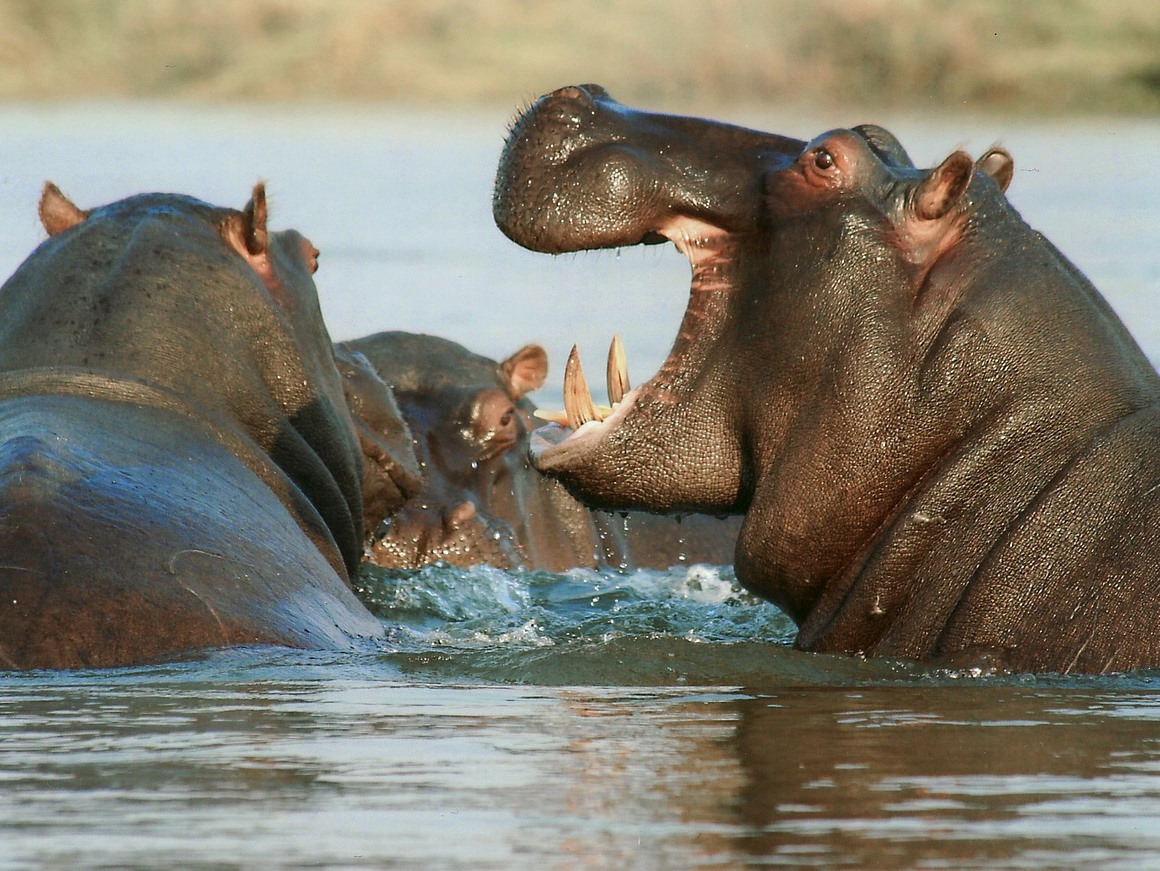Imposing creatures with ambassador potential: hippos, crocodiles, sturgeons et al.
Researchers at the Leibniz-Institute of Freshwater Ecology and Inland Fisheries (IGB) and the International Union for the Conservation of Nature (IUCN) are investigating which animal species could become the focus of conservation measures as “imposing” flagship species in order to halt the decline of species and habitats in freshwaters. The current study emphasises how legitimate this flagship approach is: 83 per cent of all the world’s threatened freshwater species occur in the same areas as the “imposing” freshwater species examined within the study. However, almost 60 per cent of these potential flagship species are themselves already on the Red List of Threatened Species.
About one third of all animal species around the world are threatened. But even so, it is mainly the imposing, large terrestrial and marine animals such as panda bears, elephants, polar bears and whales that are perceived by the general public as being worthy of protection. And yet the decline in freshwater species is occurring more rapidly than in their popular land-dwelling and ocean-dwelling counterparts.
Mapping flagship species
Together with her team of international researchers, IGB researcher Dr. Sonja Jähnig, co-author of the study, selected 132 examples of “imposing” large freshwater species weighing at least 30 kilos in adulthood for their study.
“Hippos, river dolphins, crocodiles, freshwater turtles and large species of fish such as sturgeons and salmon have the potential to raise public, scientific and, above all, political awareness of species loss and the attendant problems in freshwaters,” summarises Sonja Jähnig the study’s perspective.
The researchers have mapped the occurrence of the selected species. The resulting maps show that 83 per cent of all the world’s threatened freshwater species occur in the same areas as the large freshwater species under investigation – all of which are potential ambassadors for their ecosystem. If, then, efficient protective measures for these flagship species can be identified, the habitats of numerous other smaller species could be preserved at the same time.
Protegee devoid of protected areas
Human exploitation poses a serious threat to large freshwater species: 94 per cent of the animal species under investigation suffer from over-exploitation, such as being decimated by hunting and fishing at a faster rate than stocks are able to recover. 65 percent are threatened as a result of interventions in habitats, usually due to the construction of dams, and 54 per cent suffer from pollution caused by agricultural, industrial or domestic wastewater discharges.
However, 84 per cent of the range of distribution of the 132 animal species under investigation is outside protected areas. The fact that many of these large species live in large rivers, lakes and wetlands makes conservation efforts all the more difficult, explains Dr. William Darwall, Head of the IUCN Global Species Programmes’ Freshwater Biodiversity Unit and a member of the team: “These freshwater ecosystems are highly interconnected such that the species within them and the threats to those species may travel long distances often beyond the boundaries of any protected areas.“ In order to protect these animal species – and, at the same time, entire ecosystems – local protection zones, such as for spawning and breeding sites, must be combined with large-scale landscape measures operating at the scale of the river or lake catchment, taking into account the species’ migration routes, for instance. And, above all, the exploitation of these animals and the overuse of their habitats must be curbed.
Study:
Savrina F. Carrizo, Sonja C. Jähnig, Vanessa Bremerich, Jörg Freyhof, Ian Harrison, Fengzhi He, Simone D. Langhans, Klement Tockner, Christiane Zarfl, William Darwall (2017) Freshwater Megafauna: Flagships for Freshwater Biodiversity under Threat. BioScience, Volume 67, Issue 10, 1 October 2017, Pages 919–927
Read the Studie Open Access on BioScience > https://doi.org/10.1093/biosci/bix099
Further reading:
Presentation of the study on the Freshwater Blog – the freshwater biodiversity blog: https://freshwaterblog.net/2017/10/10/freshwater-megafauna-as-conservation-flagships/
More information about the concept of flagship species:
http://www.igb-berlin.de/en/news/seeking-freshwater-pandas
Background information on the endangerment of large freshwater species: http://www.igb-berlin.de/en/news/endangered-giants-large-freshwater-species-among-those-most-threatened-extinction-planet
Contact:
| Dr. Sonja Jähnig Leibniz-Institute of Freshwater Ecology and Inland Fisheries (IGB) Dept. Ecosystem Research sonja.jaehnigigb-berlin.de +49 (0) 30 6392 4085 |


